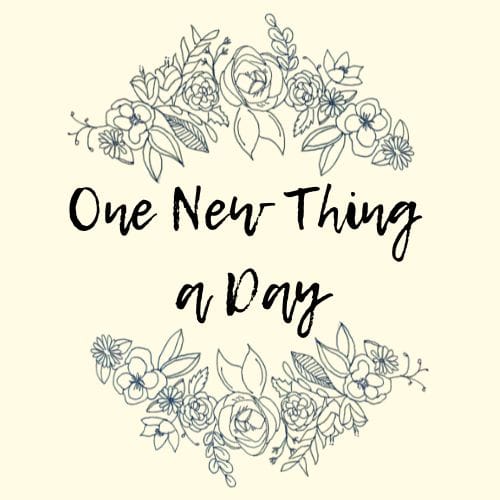Creating Effective Organizations

For the last ten years, a topic has been counting around in my brain, looking for an expression via my writing. A subject both personal and expansive, one that delves into the core of identity, societal structures, and the ever-evolving landscape of nonprofit organizations. Yet, despite my intent to explore this terrain, I've hesitated, wary of pointing out systemic flaws without a path forward or solutions. But perhaps, at this juncture, the mere act of raising questions is an imperative step forward. I anticipate this will be a topic I return to write about frequently.
Allow me to give a brief biographical history, that lends context to my contemplations. My childhood was steeped in the world of nonprofits, where my father's fundraising lectures and my mother's work with various animal welfare organizations seamlessly woven me into their endeavors. In those early years, my contributions were often humble – sorting mailings by zip code, stamping envelopes, and, on a rare occasion, assisting with inventory at a gift shop. Since then, a 501(c)3 entity has never been distant from my orbit, resulting in my feeling both aligned with and, at times, estranged from this realm.
The roots of the nonprofit sector, symbolized by designations like 501(c)3, (c)4, and (c)6, were sown with noble intentions – facilitating positive change, channeling resources, and nurturing societal welfare. However, as I traverse my path as a consultant to nonprofit organizations over the last 12 years, I've unearthed disconcerting trends. These trends, much discussed among my colleagues as well, compel me to question the efficacy of the current nonprofit model.
Let's delve into the crux of these issues.

1. A Crisis in Skilled Leadership on Boards
A fundamental pillar in nonprofit organizations is the Board of Directors – the nexus of governance, fiduciary responsibilities, and often, fundraising. This non-compensated, volunteer-driven body is intended to provide effective oversight, while simultaneously nurturing the organization's mission. Yet, the lines of responsibility often blur, and questions emerge. Who truly holds the reins in overseeing the CEO? What exactly should the Board manage beyond the CEO's removal?
The intricacies of these dynamics are far from straightforward, leading to murky waters. For instance, the question of who evaluates and sets the compensation for the CEO varies widely, with some organizations assigning this task to the Board Chair or Executive Committee. On occasion, the entire board gets involved, presenting a complex landscape where multiple voices vie for authority.

2. The Challenge of Succession Planning and Founder Transition
Another recurring concern is the lack of succession planning and the prolonged tenure of founders within organizations. Research has long highlighted the impending leadership gap in nonprofits, a void that must be filled by a new generation of leaders. However, my observations defy this narrative. Instead of a dearth of aspiring Executive Directors, I've noticed a scarcity of training and leadership development platforms.
Founders' reluctance to step aside, often driven by doubts about the successor's competence, further compounds the issue. These circumstances result in extended tenures that can potentially hinder an organization's evolution. The absence of focused training and guidance for upcoming leaders’ places organizations at risk of stagnation.

3. The Fractured Structure of Fundraising
In the realm of fundraising, a familiar narrative unfolds. Organizations commonly entrust their Board of Directors and CEO with fundraising responsibilities. Additionally, a Director of Development may be brought in, tasked with both engaging the board and catalyzing external donor engagement. However, this model, despite its intentions, often falters.
Power dynamics and organizational structures often muddy the waters. The delineation of roles and responsibilities, particularly with regard to fundraising, can be nebulous. A quagmire arises – who is the primary fundraiser, and who rightfully claims credit for contributions? This question is especially crucial given the collaborative nature of fundraising, where each member of the organization plays a role.
4. The Turnover Conundrum in Development
Within the realm of development, a similar tale of high turnover and unmet expectations unfolds. The average tenure of a development staffer is a mere 18 months. This churn is not surprising, considering the multifaceted challenges they face. Many development staff feel constrained – denied opportunities to personally meet with donors or lacking resources for effective stewardship programs.
While the focus on accountability is important, it often skews toward outcomes rather than recognizing the incremental groundwork that paves the way for successful fundraising. Development professionals need room to breathe, build relationships, and lay foundations for sustainable support.

A Path Forward
As I pause to reflect on these observations, my heart aches with the knowledge that my insights might inadvertently tarnish the realm that has long shaped my life. However, in confronting the complexities, we take the first stride toward solutions. To mend these fractures, we must recognize that change is vital.
The narrative of nonprofits must evolve, as our world transforms, as needs shift, and as aspirations grow. The structure of Boards, the transition of founders, the structure of fundraising – all these facets demand reevaluation. It's a call to action, a plea for strategic realignment that nurtures the essence of nonprofits while adapting to the ever-evolving landscape.
The journey forward might be uncertain, and yet, as I pen these words, the mere act of questioning – of acknowledging the gaps – ignites a spark of hope. In the chasm between problem and solution lies the space where innovation can take root. And as the realm of nonprofits stretches toward this horizon of transformation, we embark on a journey of renewal, reimagining the very core of our pursuits.
Favorite link(s) for today: Keeping it in the family today. Kiddo’s Etsy. She began her Hand Lettering Business at age 14, and just hit her 5th anniversary! I’m a proud mama. You can also find her on Patreon, which is a fun way to support local creators monthly. (Special thanks to AB and fam for doing so! Y’all rock!)
Read this Book: My father recommended this to me. I haven’t begun, but I’d love to hear from you if you have read it. Essential Spirituality: The 7 Central Practices to Awaken Heart and Mind, by Roger Walsh (Author), Dalai Lama (Foreword)



